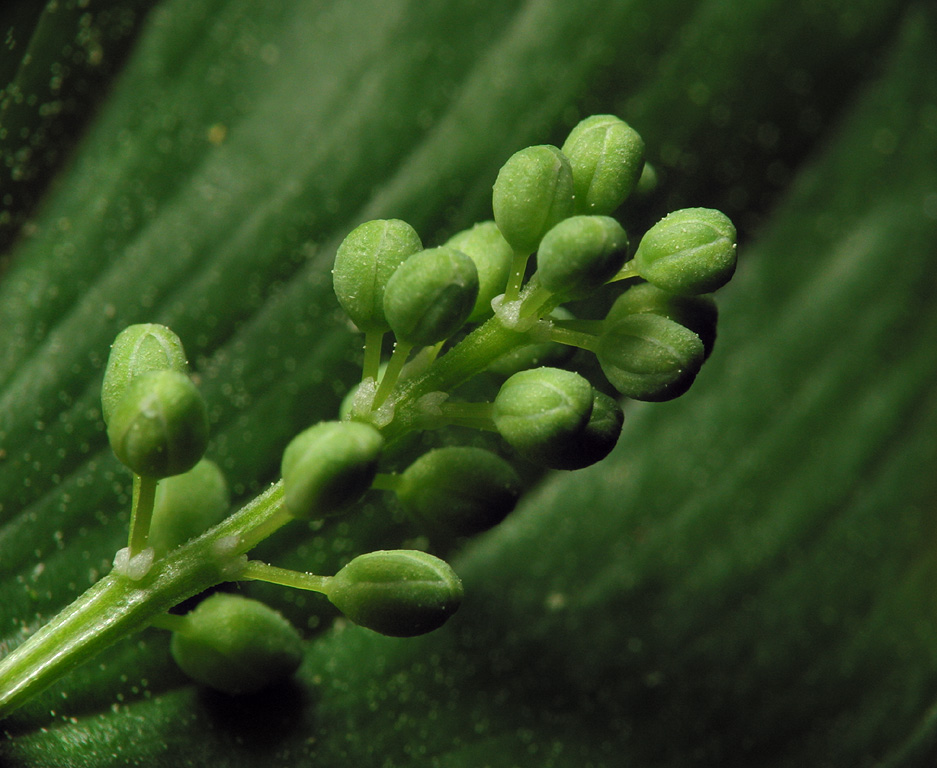
Maianthemum bifolium · dvilapė medutė
Flower buds
- false lily of the valley, May lily
- Zweiblättrige Schattenblume
- dvilapė medutė
- divlapu žagatiņa
- konwalijka dwulistna
It is native from western Europe east to Siberia, China and Japan. Non-flowering stems usually have only one waxy leaf, but on flowering plants there is one basal leaf that withers away before flowering, and two stem leaves produced alternately up the 10–20 cm tall stems, which are topped off with many star-shaped white flowers. The leaves are heart to triangular, 3–8 cm long and 2–5 cm broad, with small fine hairs on the veins. The flowers have four tepals, four stamens and have two chambers in the pistil; flowering is in mid spring to early summer.
One to two seeds are produced in round berries that are speckled red when immature and redden with age. This species is found in the wild growing in open forests and on damp soils in grassy ditches and thickets. The whole plant is slightly toxic and eating even a few grams is dangerous.
Daugiametis, 5–15 cm aukščio žolinis, šakniastiebinis augalas. Stiebas status, briaunotas, dažniausiai su dviem pražanginiais lapais. Žiedai smulkūs, balsvi, malonaus kvapo, viršūninėse kekėse. Žydi gegužės – birželio mėn. Vaisius – rutuliška, tamsiai raudona, aitriai saldi uoga, prinokstanti rugpjūčio – rugsėjo mėn. Dauginasi šakniastiebiais ir sėklomis, kurias išplatina paukščiai. Lietuvoje dažna. Auga ūksminguose spygliuočių ir mišriuose, rečiau lapuočių miškuose. Geriausiai tarpsta vidutinio drėgnumo, rūgščiuose, derlinguose dirvožemiuose. Uogos, kaip ir visas augalas, yra nuodingas.
‥
0 comments
Add a comment